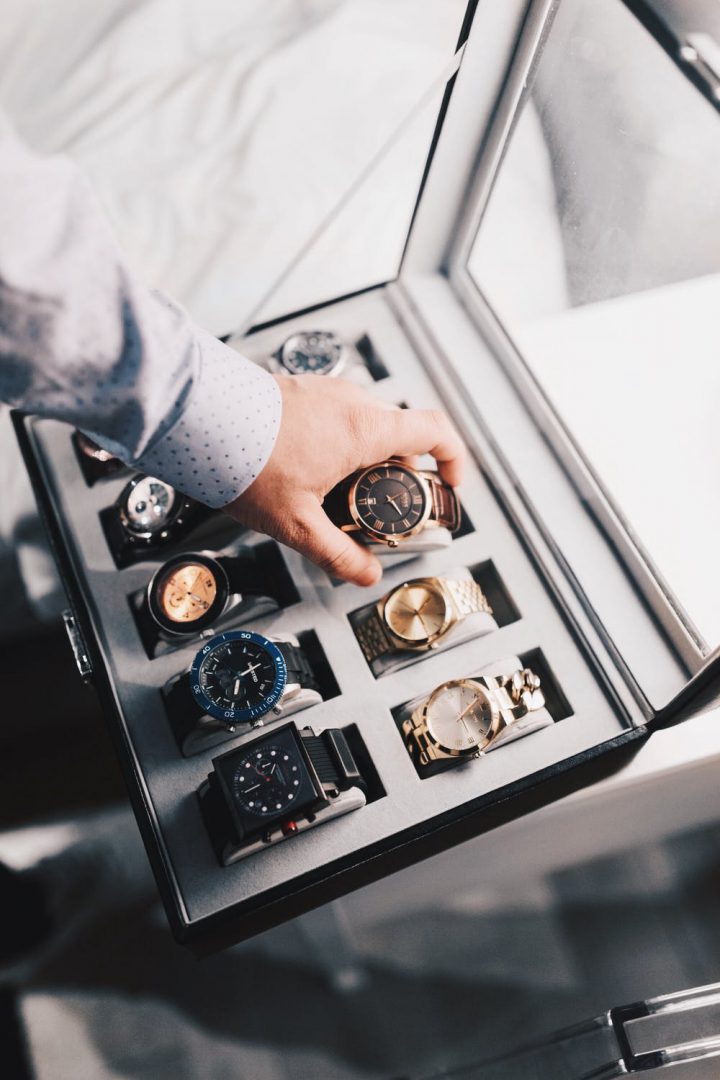If you have a wristwatch, and it does not matter if it is a gold watch, a silver watch, or a watch with a leather strap – you must know how to keep it clean and maintain it in the most optimal way. The better you know how to maintain your watch, the longer it will last and will be resistant to high or low temperatures.
It is important to say, there is no difference between women’s watches or men’s watches and anyone who owns a wristwatch should know how to maintain it at the highest level.
Here are some professional and common questions we have answered for you:
What is Sapphire Crystal Glass?
The crystal – the glass of the watch is a transparent cover that protects the dial of the watch and is scratch-resistant.
How long should the battery in my watch last?
It depends on the age of the watch and the types of functions, for example, stopwatch, stopwatch with chronograph applications, second hand, etc. Basically, the expected battery replacement in your watch is every few years, and usually, it ranges from two to five years
What is the difference between quartz / mechanical/automatic movements?
The following is a description of the three types of movements:
Quartz watches:
Watches that have quartz movements are a relatively new development in the history of the watch. Quartz crystals are unique property in that when they are compressed or bent, they conduct the constant voltage, or pulse, on their surface. This constant voltage can be used for quartz power watches with precise accuracy. Instead of a spring (mechanical movement)
Quartz watches rely on a battery for their energy. The battery sends electrical energy to the tiny quartz crystal, which in turn generates a pulse at normal, constant levels. Because the pulse (also known as impulse) is very constant, quartz movements ensure accurate time measurement, accurate to the hundredth of a second.
To convert the impulse into a stable force that can move the clock hands at regular intervals, the impulse is simply passed through a stepping motor that converts the electrical energy of the impulse into the mechanical energy needed to operate the clock. Since the early 1970s, quartz watches have become very popular, both for consumers and manufacturers, due to the fact that quartz watches are less expensive than mechanical movement watches and can be easily manufactured in large quantities.
Mechanical movements:
If a watch is saying that there is mechanical movement, it means that it has a device for keeping time, which uses bounce energy, and saves time through the highly regulated release of energy through a system of gears and ratchet. It differs from typical quartz in that it uses only mechanical components to maintain time. A standard mechanical watch can run about 40 hours on the winding of the main motor, and some designs that can last up to 8 or 10 days are also available.
The overall design of mechanical motion clocks has not changed much in the last fifty years. But, the development of more modern technology and materials has changed the way mechanical movement clocks are manufactured.
Automatic movements:
Clocks that are activated by automatic movements operate similarly to the clock in mechanical movements, except that the disassembly of a spring takes place automatically whenever the wearer moves. With this in mind, it is sometimes necessary to “set the clock” automatically to ensure accurate time measurement.
What is the difference between a chronograph and a chronometer?
“CHRONOGRAPH” is a clock that has a stopwatch function. Typically, the top pusher will start and stop the stopwatch. The bottom pusher resets it.
The movement of the “CHRONOMETER” has undergone a series of tests during accurate retention time and has been certified as an excellent timekeeper. Many watchmakers will put their movements through this test to illustrate their accuracy. On the watch will usually be the word “chronometer”.
To become a chronometer, the clock movement must go through 15 days of severe testing. The accuracy of the movement is marked at 5 different positions and at different temperatures. It simulates conditions where the watch may be used and active. The watch requires on average between 6+ and 4 seconds per day to earn the certification. If the watch is simply described as “Chrono”, it is usually safe to assume that it is the chronograph.
Who says the watch is water-resistant, what do you really mean?
Watches marked as water-resistant with no depth indication are designed to withstand accidental water splashes only. It is recommended not to flood this clock.
Higher levels of water resistance are marked by higher and higher depths which are usually indicated in meters. There are a variety of ways to make your watch water resistant. Like using rubber seals or “O” rings to seal the back cover. A watch with screws on the back provides a higher degree of water resistance. Some crowns “stem twists” actually screwed into the pocket of the watch to increase the water-resistance further.
The water resistance guide (by meters):
- 30 meters in water test – resistant to splashes of water or rain, but should not be worn on the hand while swimming or diving. Not shower resistant
- 50 meters in water test – suitable for showering or swimming in shallow water.
- 100 meters in water test – suitable for swimming and snorkeling.
- 150 meters in water test – suitable for snorkeling.
- 200 and 250 meters or more in a water test – suitable for deep diving of the diver and meets ISO standards and suitable for prolonged diving.
Please note that we do not recommend swimming or diving with your watch, Unless it has a threaded crown at the bottom also known as a “locking screw” or “screw” crown and is water resistant to at least 100 feet.
How do I know what my water resistance is?
Water-resistance is not a permanent condition and should be maintained. If you want to dive with your watch regularly in the water, you need to make sure that your watch comes to an annual service to make sure all the seals and imperfections are intact. It is not recommended to wear your water-resistant watch in a hot shower, sauna, or Jacuzzi.
The extreme heat causes the metal parts to expand at a different rate than the rubber seals. This creates small openings that can allow water droplets to penetrate the clock. Sudden temperature changes are particularly severe. Be careful not to jump into a cold pool after wearing your watch in the hot tub.
After swimming or diving in salt water, immediately rinse the watch with a stream of freshwater.
If your watch has a rotating dial, turn the dial several times while rinsing it. This will prevent salt buildup and corrosion of the board ring.
Leather straps can be water-resistant. however, leather straps are more easily damaged by frequent exposure to water. If you want to wear your watch while swimming – consider buying one with a metal bracelet, rubber, or nylon diver strap.
What is the best way to clean my watch?
The best way to clean your watch is with a fiber-free cloth and toothpick. Use a toothpick to clean any dirt accumulation on the bracelet or casing of the watch and fabric to wipe it if it is water resistant, it can be cleaned occasionally with a mixture of hot water and mild soap. If the strap is leather or non-metallic, clean only in non-urgent cases!
How do I keep my watch in great condition?
Although there are automatic mechanical watches without batteries, simple maintenance is necessary for accurate continued and long-term use.
Self-timer watches depend on the movement of the arm for operation and require activity even if you wear your watch on a daily basis. If you wear your automatic watch every day, it is best to stretch it once every two weeks to keep the wheels moving and lubricate with an oily fluid. Simply rotate or stretch the crown (the same button is used to adjust the time and date) until you encounter slight resistance.
If you do not wear your automatic watch every day, you should try to stretch it at least twice a week to ensure continuous operation as well as keeping the mechanism inside to a full run. Try to stretch your mechanical watch at the same time each day. This is very beneficial to the mechanism.



